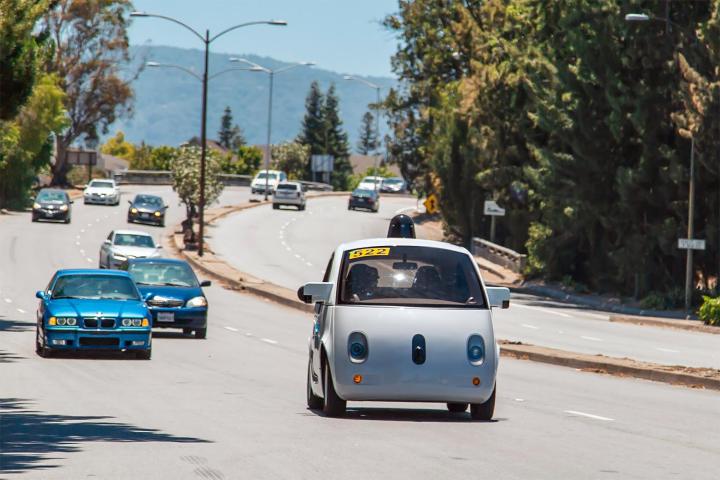
Thanks to the work of Katherine Driggs-Campbell of University of California, Berkeley, self-driving cars may one day soon be able to navigate the crazy roads on the United States better than we can because, well, defensive driving is literally part of their DNA.
Driggs-Campbell and her team have managed to develop an algorithm that has the incredible capacity to determine — and with 92 percent accuracy to boot — whether or not a human driver is going to switch lanes. And for everyone who’s ever been cut off, taken by surprise, or just generally put in a dangerous situation by an unexpected, turn signal-less lane change, we know exactly how important a prediction this really is.
So how did they come up with this algorithm? The Berkeley-based team asked volunteers to “drive” in a simulation machine. Anytime they wanted to change lanes, they were asked to push a button on the steering wheel to indicate their decision to do so. This allowed researchers to determine what sorts of factors were present at the time of these decision, like where other cars were located, how fast the car was going, whether it had changed speeds in anticipation of the lane change, and how much room was available for the lane change.
From here, they “taught” a computer how to think like a human, and in preliminary tests, the algorithm-run machine did an extremely respectable job at predicting whether and when a lane change was imminent.
Of course, getting a computer to read a human’s mind is only half the battle — humans will also have to become accustomed to having autonomous cars next to them on freeways and neighborhood streets as well. This, experts say, may actually be more of a challenge. While humans and human operated machines give familiar signs that suggest what their next moves will be, machines may not display these same behavioral patterns.
As Driggs-Campbell told The New Scientist, “There’s going to be a transition phase. How do you ensure the autonomous vehicle is clearly communicating with the humans, and how do you know the humans are understanding what they’re doing?”
So start thinking like a robot, friends. After all, they may soon be in the car next to you.
Editors' Recommendations
- Tesla Autopilot vs. full self-driving: What’s the difference?
- Beleaguered robotaxi startup Cruise lays off quarter of workforce
- Cruise woes prompt production halt of fully driverless van
- Dubai Police to deploy driverless patrol cars with AI smarts
- Waymo expands robotaxi service area in San Francisco

